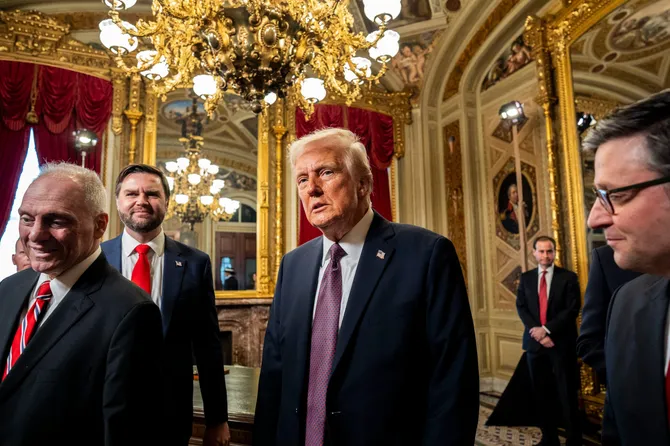President Donald Trump’s recent tariff announcements have sent ripples through the corporate sector, signaling a potential shift in trade policies that could impact various industries. On January 21, 2025, Trump threatened to impose 25% tariffs on imports from Mexico and Canada starting February 1, unless both nations take measures to curb the flow of migrants and the opioid fentanyl into the United States.
Implications for Trade and Industry
The proposed tariffs are part of a broader strategy to restructure trade relationships and reduce deficits. In his second term, Trump plans to implement aggressive tariffs on all U.S. imports, aiming at 10%, with a 60% tariff on Chinese goods. While these measures are intended to bolster domestic industries, they also raise concerns about increased costs for U.S. consumers and potential retaliatory actions from trade partners.
Corporate Response and Strategic Adjustments
In response to the looming tariffs, some companies are adjusting their strategies. Mexican firms, for instance, are emphasizing their North American identities and announcing new investments in the U.S. Cemex, a leading cement company, plans to invest up to $6 billion in the U.S. over five years. Executives from various Mexican companies are optimistic about finding common ground with Trump, viewing him as a pro-business leader.
Economic Analysis and Potential Outcomes
Economists warn that the proposed tariffs could have significant economic repercussions. A study by the Budget Lab at Yale University suggests that while the tariffs may raise some revenue, they could also reduce U.S. gross domestic product by as much as $325 billion, effectively negating the fiscal benefits.
As the February 1 deadline approaches, corporate America faces a period of uncertainty. Companies must navigate the complexities of shifting trade policies, balancing the potential benefits of domestic investment against the risks of increased operational costs and disrupted supply chains. The situation underscores the importance of strategic planning and adaptability in the face of evolving economic policies.





